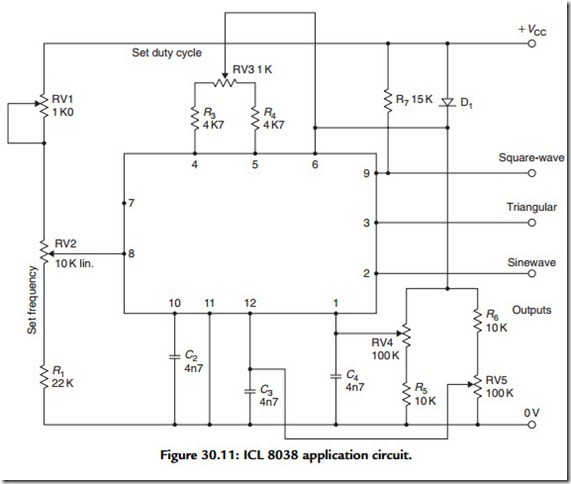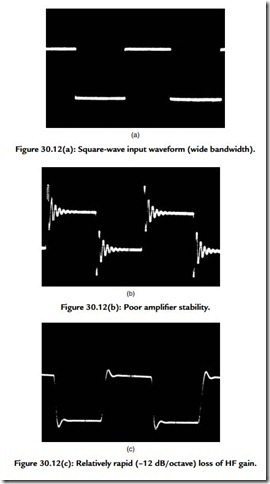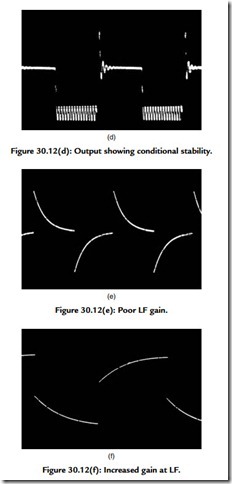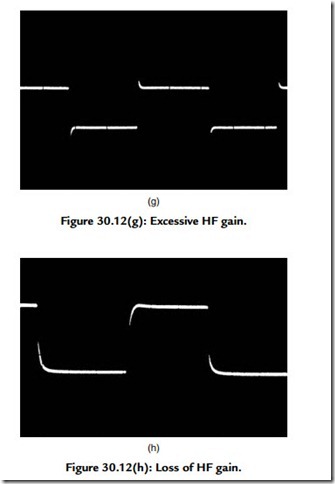Alternative Waveform Types
A range of waveforms, including square- and rectangular-wave shapes, as well as triangular and “ramp” type outputs, are typically provided by a “function generator.” The outputs from this kind of instrument will usually also include a sinusoidal waveform output having a wide frequency range but only a modest degree of linearity.
An IC that allows the provision of all these output waveform types is the ICL ‘8038’ and its homologues, for which the recommended circuit layout is shown in Figure 30.11. The output from this is free from amplitude “bounce” on frequency switching or adjustment and can be set to give a 1-kHz distortion figure of about 0.5% by adjustment of the twin-gang potentiometers RV4 and RV5. As shown, the frequency coverage, by a single control (RV2), is from 20 Hz to 20 kHz.
Since a square-wave signal contains a very wide range of odd-order harmonics of its fundamental frequency, a good quality signal of this kind, with fast leading edge (rise) and trailing edge (fall) times, and negligible overshoot or “ripple,” allows the audio systems engineer to make a rapid assessment both of the load stability of an amplifier and of the frequency response of a complete audio system.
With an input such as that shown in Figure 30.12(a), an output waveform of the type shown in Figure 30.12(b) would indicate a relatively poor overall stability by comparison with that shown in Figure 30.12(c), which would merely indicate some loss of high frequency. The type of waveform shown in Figure 30.12(d) would imply that the system was only conditionally stable and unlikely to be satisfactory in use.
The type of oscilloscope waveform shown in Figure 30.12(e) would indicate a fall off in gain at low frequencies, whereas that of Figure 30.12(f) would show an increase in gain at LF. Similarly, the response shown in Figure 30.12(g) would be due to an excessive HF gain. With experience, the engineer is likely to recognize the types of output waveform
associated with many of the common gain/frequency characteristics or design or performance problems.
The other types of waveform that can be provided by a function generator have specific applications. The sinewave output, although too poor in linearity to allow amplifier THD measurements to be made with any accuracy, is usually quite free from amplitude variation, and the “single knob” wide-range frequency control of such an instrument allows fast checking of the performance of such circuits as low- or high-pass filters or tone controls.
Distortion Measurement
One of the more important characteristics of any audio system is the extent to which the signal waveform is distorted during its passage through the system. Where the inputsignal (fin) is of a single frequency, and this distortion is due to some nonlinearity in the transfer characteristics of the signal handling stages, this nonlinearity will generate a series of further spurious signals occurring at frequencies that are multiples of the input frequency (or frequencies).



